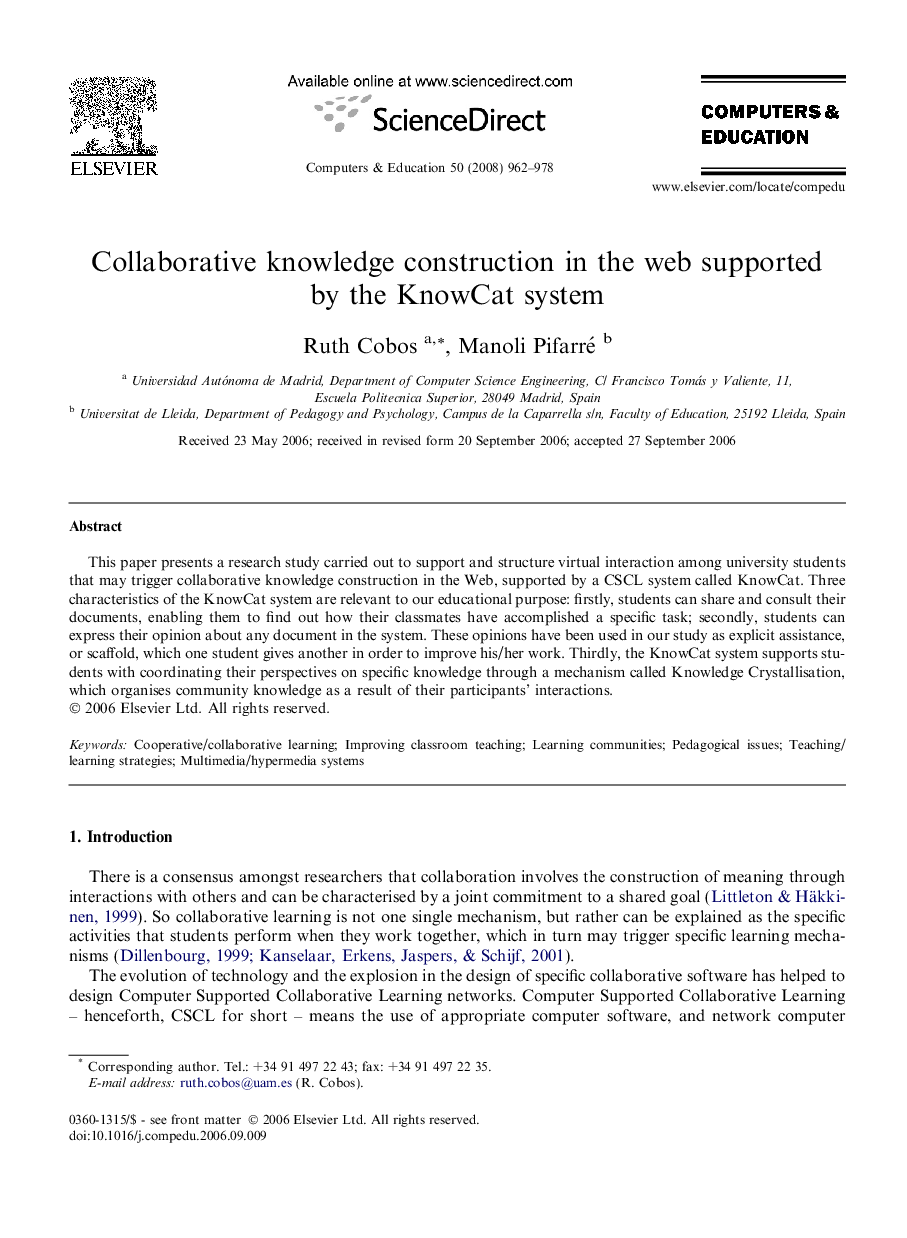| Article ID | Journal | Published Year | Pages | File Type |
|---|---|---|---|---|
| 349669 | Computers & Education | 2008 | 17 Pages |
This paper presents a research study carried out to support and structure virtual interaction among university students that may trigger collaborative knowledge construction in the Web, supported by a CSCL system called KnowCat. Three characteristics of the KnowCat system are relevant to our educational purpose: firstly, students can share and consult their documents, enabling them to find out how their classmates have accomplished a specific task; secondly, students can express their opinion about any document in the system. These opinions have been used in our study as explicit assistance, or scaffold, which one student gives another in order to improve his/her work. Thirdly, the KnowCat system supports students with coordinating their perspectives on specific knowledge through a mechanism called Knowledge Crystallisation, which organises community knowledge as a result of their participants’ interactions.
